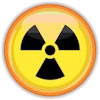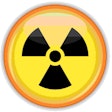
NEW YORK (Reuters Health) - The risk of second primary neoplasms (SPNs) of the central nervous system (CNS) in survivors of childhood cancer increases greatly with the dose of radiation they received and, independently, with the dose of intrathecal methotrexate used.
Those findings, from the British Childhood Cancer Survivor Study, are reported in the Journal of Clinical Oncology online November 15 by Dr. Michael M. Hawkins and colleagues at the University of Birmingham, U.K. "We carried out the largest-ever population-based cohort and nested case-control study, to our knowledge, to investigate the risk of CNS SPNs in survivors of childhood cancer and to relate this risk to treatment," the researchers state.
Among 17,980 individuals who survived at least 5 years after being diagnosed with cancer in childhood, 247 second primary CNS neoplasms -- mainly meningiomas (137) and gliomas (73) -- occurred 5 to 52 years after the childhood cancer. The mean interval was 23.1 years for meningiomas, and 17.4 years for gliomas.
The cumulative incidence of all second primary neoplasms after 40 years of follow-up was 3.6%. Among those who underwent radiation for a first CNS neoplasm, the corresponding cumulative incidence was 9.1%.
In a nested case-control study, the investigators found that the risk of second primary CNS neoplasm increased linearly with escalating radiation exposure.
Specifically, compared to no radiation, in five categories of radiation dosage ranging from less than 10 Gy up to more than 40 Gy, the adjusted relative risk for meningioma was 1.8, 9.4, 51.6, 567.9, and 479.1. The relative risk of glioma also increased with increasing radiation dosage, but much less steeply.
Exposure to increasing levels of intrathecal methotrexate independently increased the risk of meningioma. "After adjustment for radiotherapy exposure, the RR of meningioma associated with a cumulative exposure of at least 70 mg/m2 of intrathecal methotrexate was 36 times that experienced in those unexposed to intrathecal methotrexate," Dr. Hawkins and colleagues report.
They say this is a novel finding, but there weren't enough survivors in the cohort who were treated with intrathecal methotrexate without cranial irradiation to assess their risk of meningioma. "It is important that such populations are investigated," the authors conclude, "because intrathecal methotrexate is still widely used to treat leukemia and lymphoma."
Source: http://link.reuters.com/wez55q
J Clin Oncol 2010.
Last Updated: 2010-11-15 19:47:19 -0400 (Reuters Health)
Related Reading
Childhood radiation exposure may increase risk of leukemia, October 6, 2010
Child cancer survivors have higher heart risk, December 10, 2009
Lasting cognitive problems seen in survivors of childhood CNS cancers, November 4, 2009
Childhood cancer survivors susceptible to diabetes, August 11, 2009
Copyright © 2010 Reuters Limited. All rights reserved. Republication or redistribution of Reuters content, including by framing or similar means, is expressly prohibited without the prior written consent of Reuters. Reuters shall not be liable for any errors or delays in the content, or for any actions taken in reliance thereon. Reuters and the Reuters sphere logo are registered trademarks and trademarks of the Reuters group of companies around the world.


















